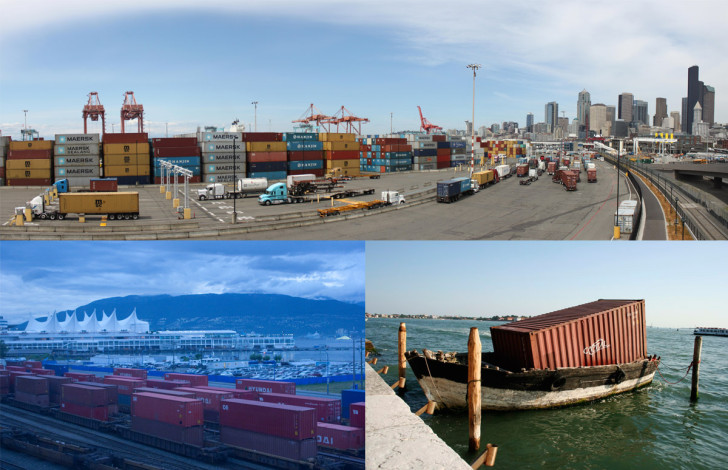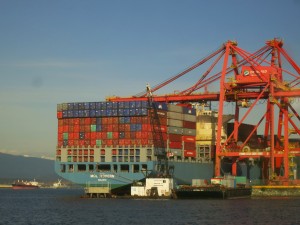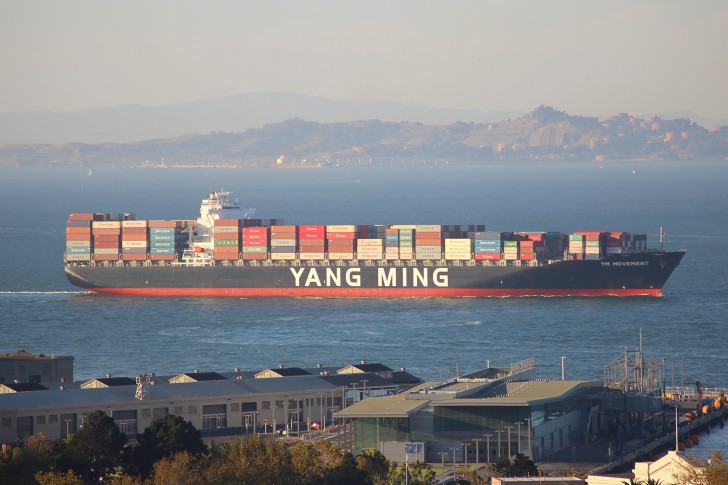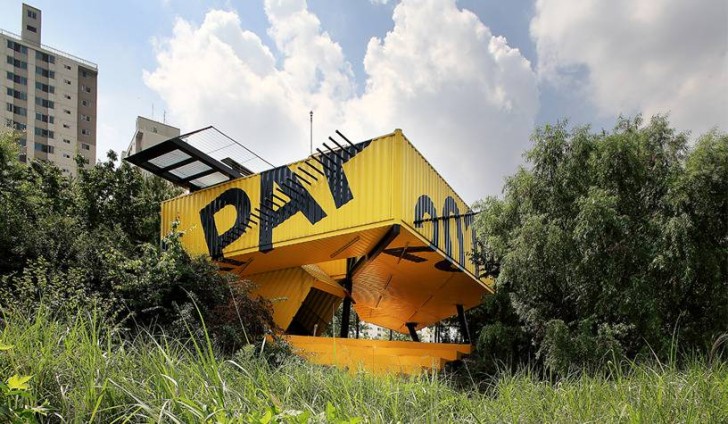There are around 6,000 cargo vessels out on the ocean right now, carrying 20,000,000 shipping containers, which are delivering most of the products you see around you. And among all the containers are a special subset of temperature-controlled units known in the global cargo industry, in all seriousness, as reefers.
70% of what we eat passes through the global cold chain, a series of artificially-cooled spaces, which is where the reefer comes into play.

Prior to the rise of mass containerization, cooled goods on a bulk cargo ship were stored together in a single space. That zone could be kept at just one temperature, so it could only carry one product at a time.
When goods arrived in port, the local economy would be flooded with that single commodity, be it fresh produce or frozen meat. Prices dropped, food was wasted, and consumers got fed up with eating too much of one product at a time.

Containers in general, but especially the intermodal variety, were pioneered by trucker Malcolm McLean, and they changed the shipping game forever. Intermodal boxes were built to move by various forms of transit, able to be easily picked up from ships and dropped on trucks or trains without loading or unloading the contents. Goods moved faster and costs were reduced, as fewer workers were required throughout the process.

For dry goods (those needing no refrigeration) the standard shipping container made transport easier right from its start. For goods needing temperature-controlled environments, the situation was more complex, as early refrigerated containers yielded mixed results.
No one knew why some shipments of perishable goods made it through to their destination port unscathed, while other shipments were partially or entirely rotted, or, conversely, frozen solid. Companies would pack tons of produce into refrigerated containers, send them on their way, and effectively hope for the best.
A refrigerated shipping container used to be like a scientific black box, where only inputs and outputs were observed. Shipping companies made efforts to tweak temperatures and rearrange goods inside the container, but ports on the receiving end still opened containers full of frozen or spoiled fruits and vegetables. The reefers needed some additional analysis, and shipping companies needed some way to keep tabs on goods in transit.

Thus, before it was cool to convert cargo containers into habitable architecture, some scientists created their own mobile laboratory inside a shipping container. This research lab had to be transported alongside cargo-filled containers as they made their way through the supply chain, from train to truck to ship. Installing the lab within a container was a natural choice.
One of these scientists, Barbara Pratt, is now the head of Reefer Services for Maersk, but in the 1970s she was a recent college graduate commissioned by General Foods to study container refrigeration. For seven years, she traveled with a 40-foot converted steel box workspace that contained a giant computer, as well as a shower, microwave, bunk beds and, of course, a refrigerator.
The container lab connected to the other cargo containers on the ship with 150 sensors on the ends of salt-resistant cables. These cables connected to the giant computer and monitored temperature, humidity levels, and gas concentrations of the goods in transit.
On ships, Pratt and her colleagues would stay in crew quarters, but they would cycle through the lab regularly, sometimes sleeping in their container alongside the computer.
As it turns out, a good reefer doesn’t just keep a consistent temperature– it also regulates airflow and controls internal atmosphere. The results of Pratt’s research impacted every aspect of shipping by reefer, from how goods are packed to how cool air is pumped into containers (from below rather than above).
The industry has continued to evolve in the decades since Pratt’s stint cruising the world on cargo vessels, and many innovations have grown out of her work. In today’s high-tech containers, the process of ripening fruit can now be slowed down or sped up, timed to coincide with the dates on which produce will hit the supermarket shelves. Even fragile goods (like fish and flowers) are regularly sent inside these precisely-controlled reefers.

There is no doubt that containers have revolutionized the way we ship and consume goods around the world. While locavores may lament the globalization of food and associated environmental implications, the global shipping industry, Pratt argues, encourages to eat more healthily. In many climates, fresh fruits and vegetables would not be available year-round without the artificial cryosphere: the vast global networks of refrigerated shipping and storage spaces. For better or for worse, reefers are an integral part of our modern existence.

Meanwhile, for some containers, shipping is still not quite the end of the story. The globally-standardized shipping module has inspired some fresh architectural applications, and reefers, in particular, are ideal candidates for adaptive reuse, as they are already insulated and designed around airflow.

Steel containers, while robustly constructed, are inevitably damaged and even slightly defective units are generally removed from the supply chain. Containers also tend to pile up in places with more imports than exports, (aka the West) so it’s often easier for companies to offload old containers locally than to ship them back empty.

As a result, industrious individuals and professionals have converted surplus containers to homes, offices, schools, and more. In turn, ancillary industries have sprouted to support this movement, supplying standardized ways to connect containers with utilities and otherwise modify them for alternative uses.
Some architects have taken to specializing in containerized dwellings, offering container-specific prefab plans and design services. In their second lives on land, human-habitable containers still raise questions of temperature control; even now, there may be more to learn from Pratt’s time in a shipping container at sea.




Comments (20)
Share
What region is Miss Twilley’s affection? You can really hear the consonants.
I’m British, although 99pi asked me to pronounce words the American way for this episode (mobile, for example).
affectation*
Team 99pi, great episode as always! I am particularly happy you mentioned the pros and cons of shipping fruits and vegetables on container ships. While it is nice to have strawberries and kiwis year round, at what cost?
Also, little side story, I remember when I was in the Navy and we had to do replenishment roughly every two weeks, and being in the reefers about 6 decks below the waterline was the best place to be when it was 100 degrees outside! And the engineers would often call down to let us know that the sensors said it was too warm or the humidity level wasn’t correct and we had to close the giant reefer doors.
> As it turns out, a good reefer doesn’t just keep a consistent temperature– it also regulates airflow and controls internal atmosphere. The results of Pratt’s research impacted every aspect of shipping by reefer, from how goods are packed to how cool air is pumped into containers (from below rather than above).
So why *was* all that food spoiling? And was the solution just pumping from below? (But why would that change anything?) Don’t leave us hanging like that!
All of that information is in my forthcoming book on refrigeration, from which this story was taken! You’ll just have to wait (a year plus, sorry) to find out…
The railroad industry has been calling refrigerated railcars “reefers” for more than 100 years, so this usage is hardly novel. Indeed, I expect it probably predates the drug-related use of the word.
I enjoyed the subject of this program and it was fascinating to hear from Barbara Pratt, one of the early innovators or refrigerated containers. But it was frankly embarrassing to hear the hosts titter like middle-school children and make bad puns about “reefer”. The term has its origins in US rail as slang for a refrigerated rail car – as a quick visit to Merriam-Webster’s website would have informed them. This usage predates the marijuana slang.
It is worth remarking on maybe once in the episode just to acknowledge the parallel etymology. But to go on and on about it reminded me of two potheads continually laughing about something that stopped being funny hours ago.
Hahaha… you said “reefer” *snort*
Agreed. That, along with the over-enunciation made this a really annoying episode. I understand she is British, and I assume that anyone listening to this particular podcast can understand a british accent. But that, together with the reefer jokes, was too much of a contrast.
Really? You were “embarrassed”? What, did you share this episode with a girl you were trying to impress who hates puns?
You know why no one has ever heard someone that practices linguistic and historical pedantry laugh out loud?
Because they’re probably too busy picking apart even these two sentences.
Lighten up, folks. Maybe smoke some reefer.
Great episode! I work for a company that regularly uses ‘reefers’ to ship our products and ingredients. I shared this with our shipping team, with a disclaimer about the title.
I found Reefer Madness charming and laughed at each pun. Kudos to having fun.
There used be ships with central refrigerations systems with insulated containers being supplied cold air from central systems on shore and on board – used extensively on refrigerated cargo routes like Europe/Australia
This system would be an enormous energy saver
I found the over-enunciation and pronunciation of words to be really distracting here. I don’t think I caught much of the actual information being conveyed due to the really strange inflections. I’d prefer if she just used her normal accent!
Wow, a lot of complaining about a really informative, well done show that also happens to be free… I found the speaker’s voice to be very pleasant.
Here is a podcast episode from omega tau to complement this http://omegataupodcast.net/2014/04/146-container-shipping/
That’s good to know that you would need to regulate the airflow inside the container as well. I am interested in shipping some items that would need to be kept cool, but I wouldn’t want them to thaw or freeze. If keeping a good airflow would help do that, then it might be worth taking a look into getting someone that could help me do that.
That’s interesting that older shipping containers weren’t as effective at keeping things cold. I’m glad that the modern containers would be better at keeping goods safe. I’ll have to think about getting a refrigerated container to help em ship some goods now that I know that they are reliable.